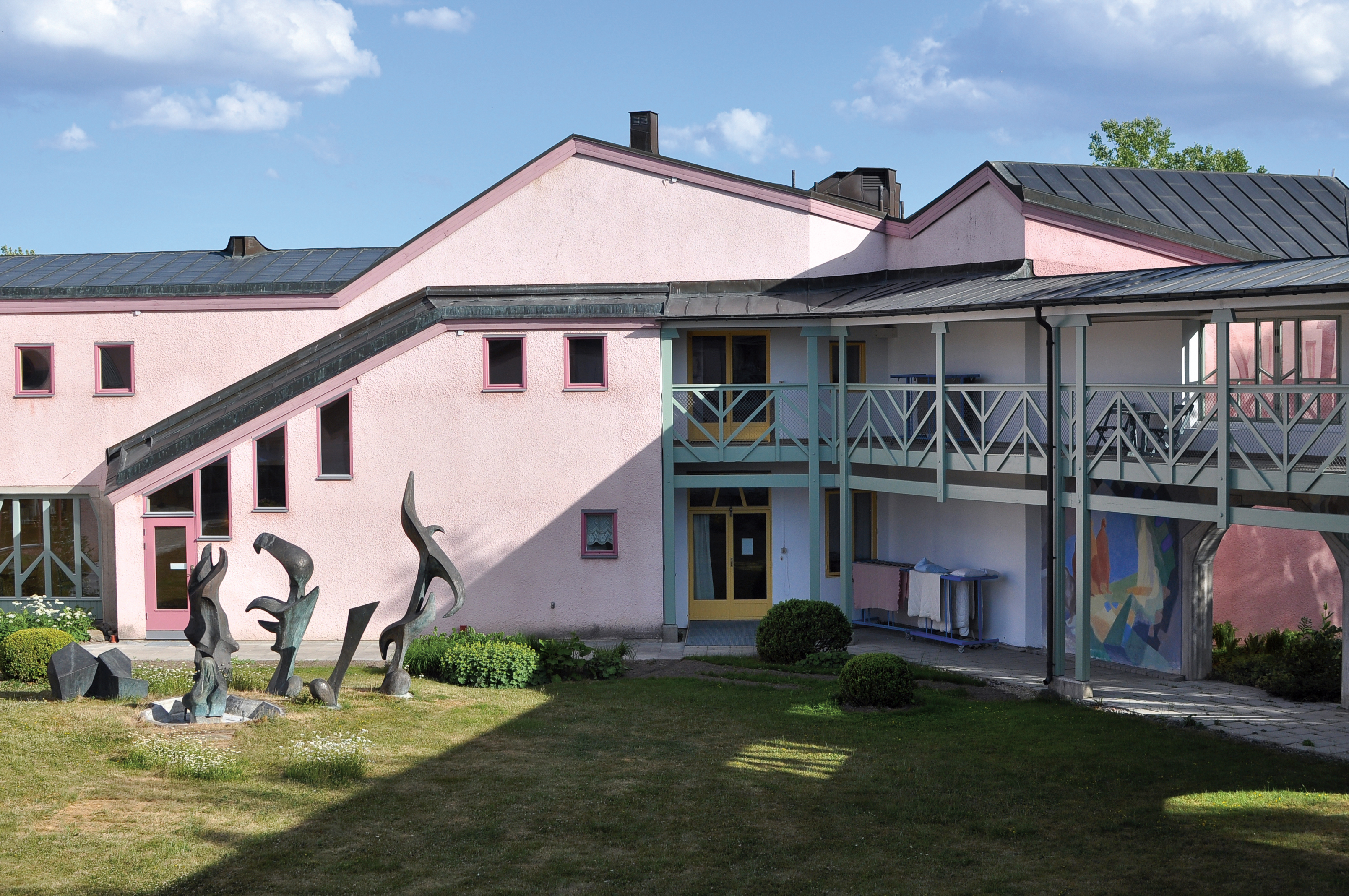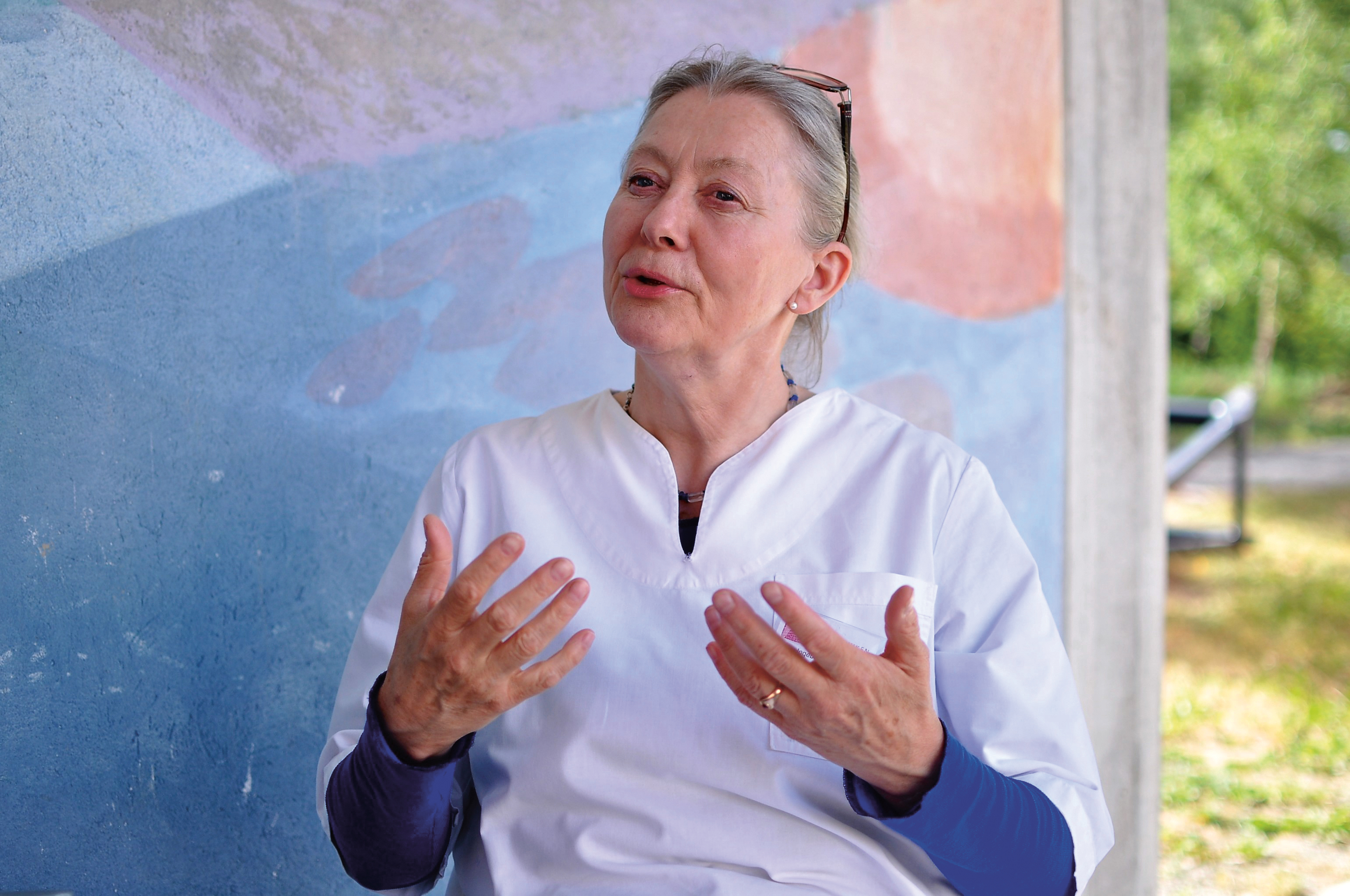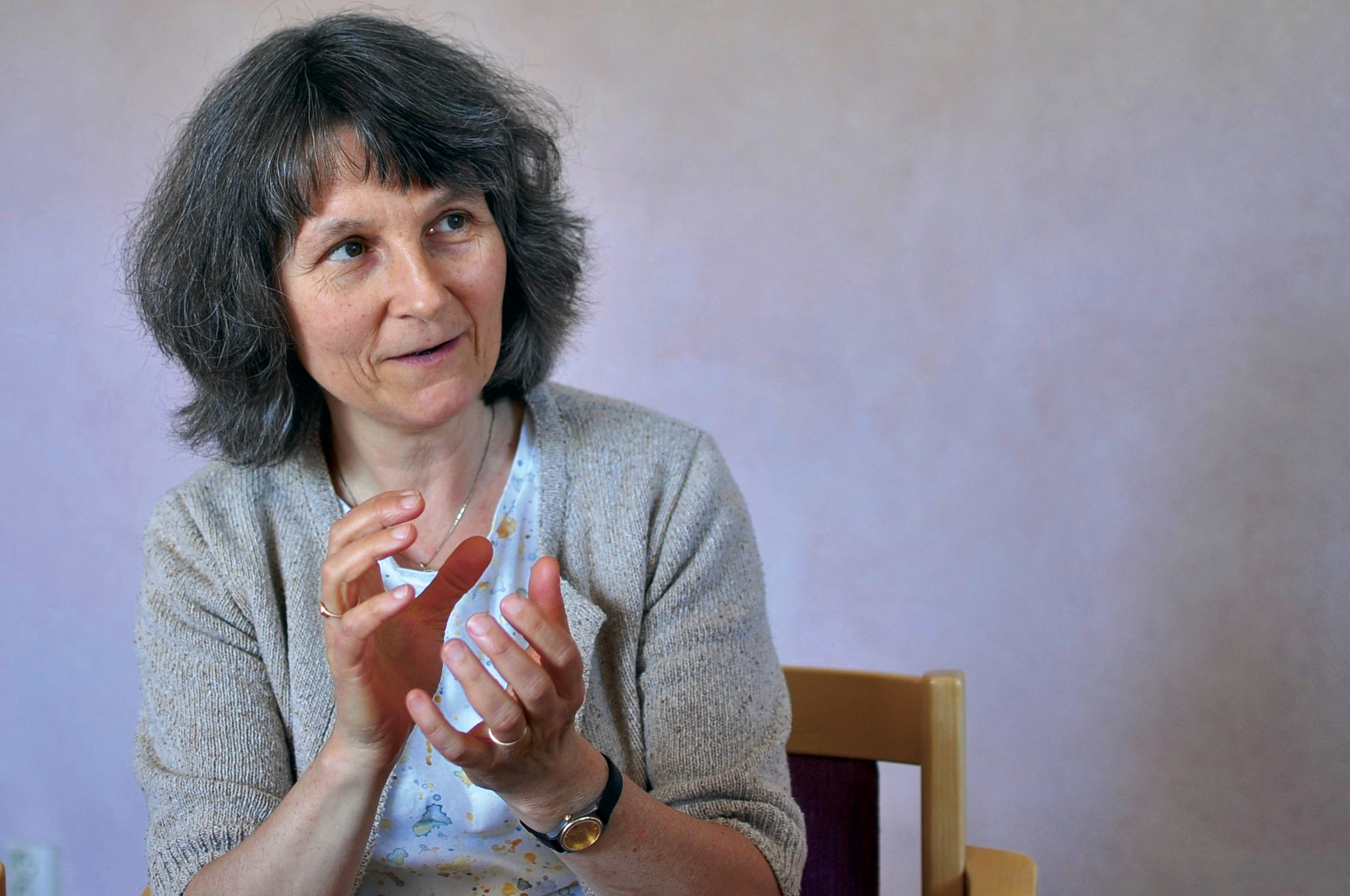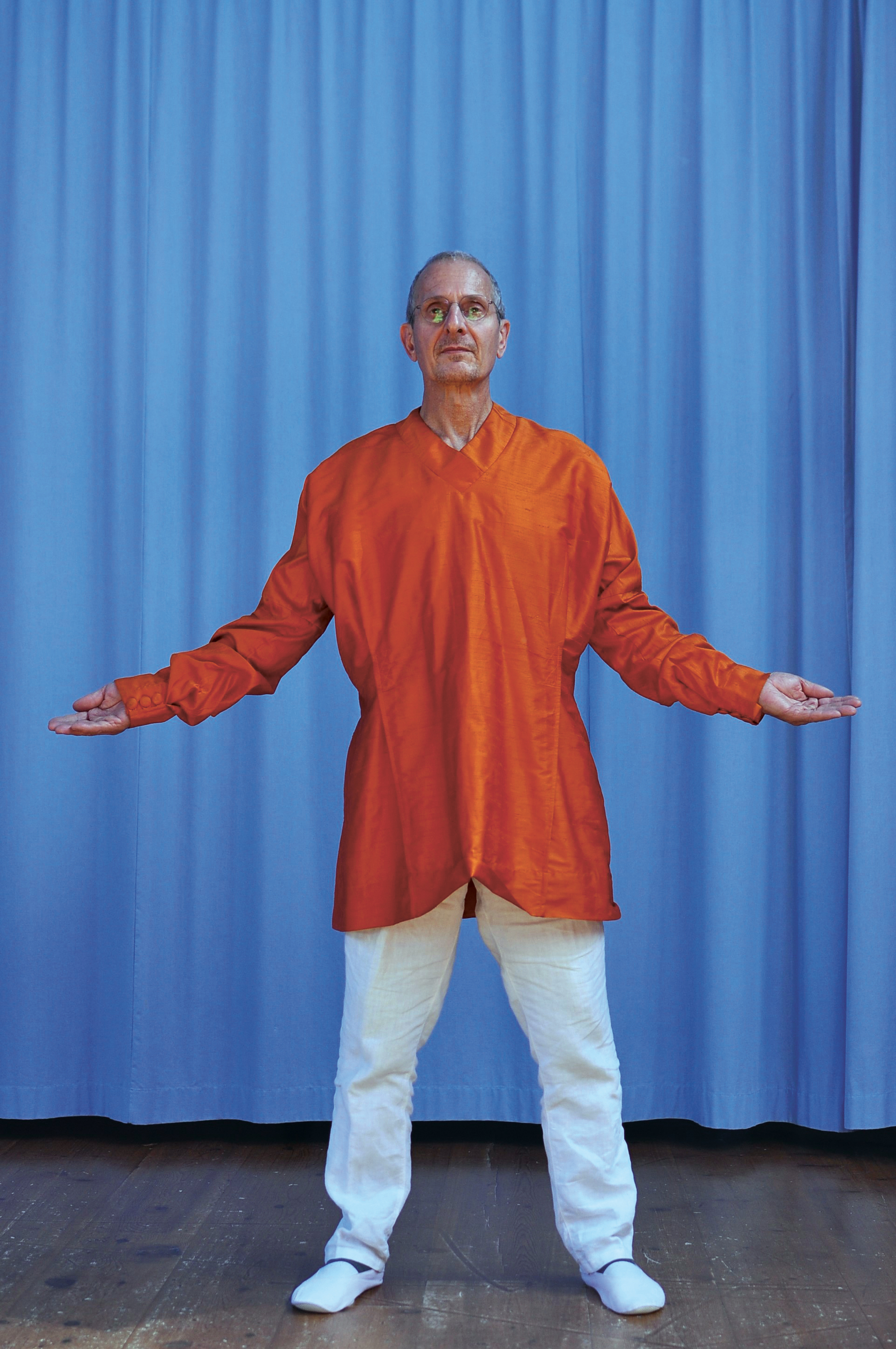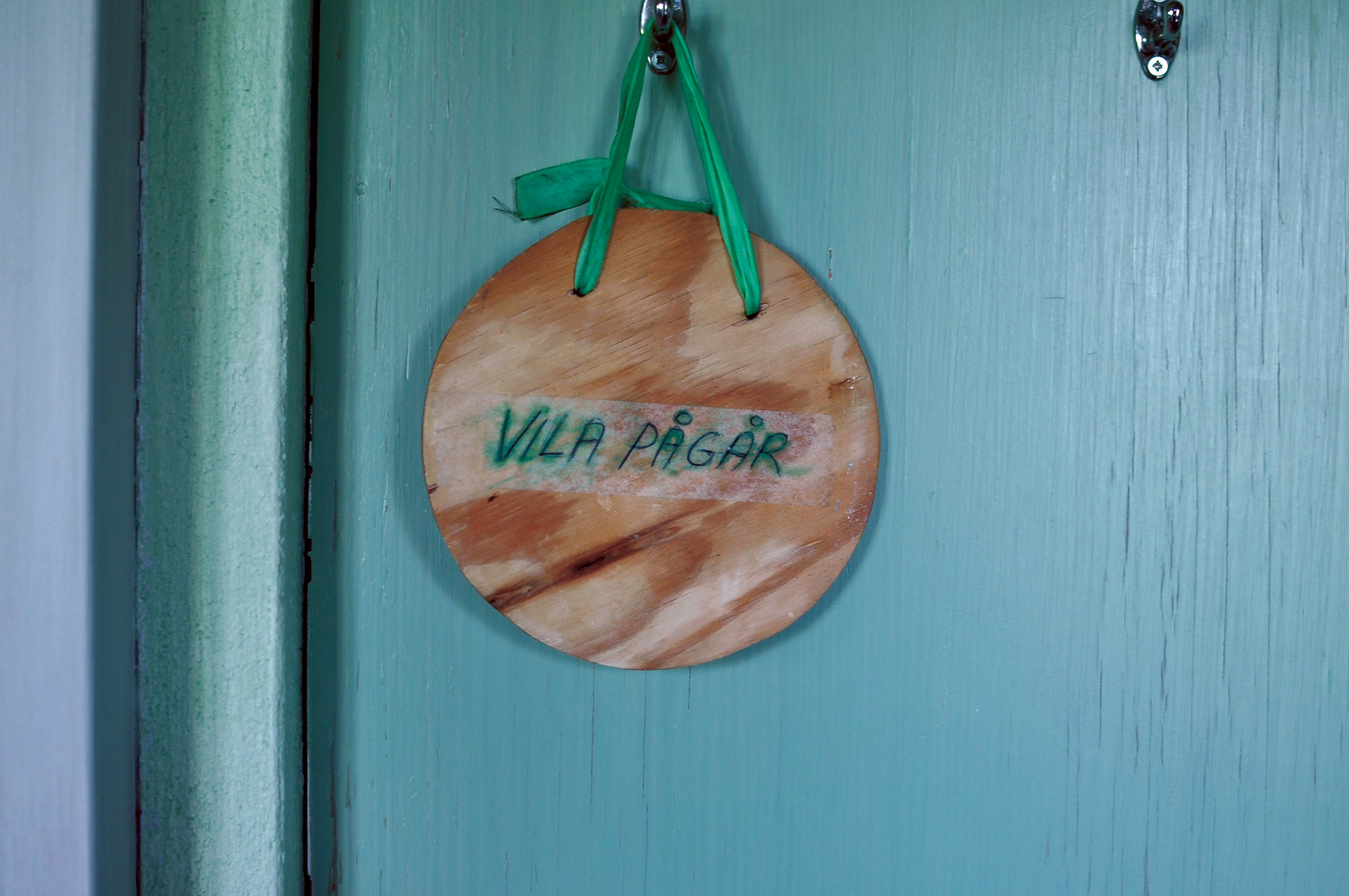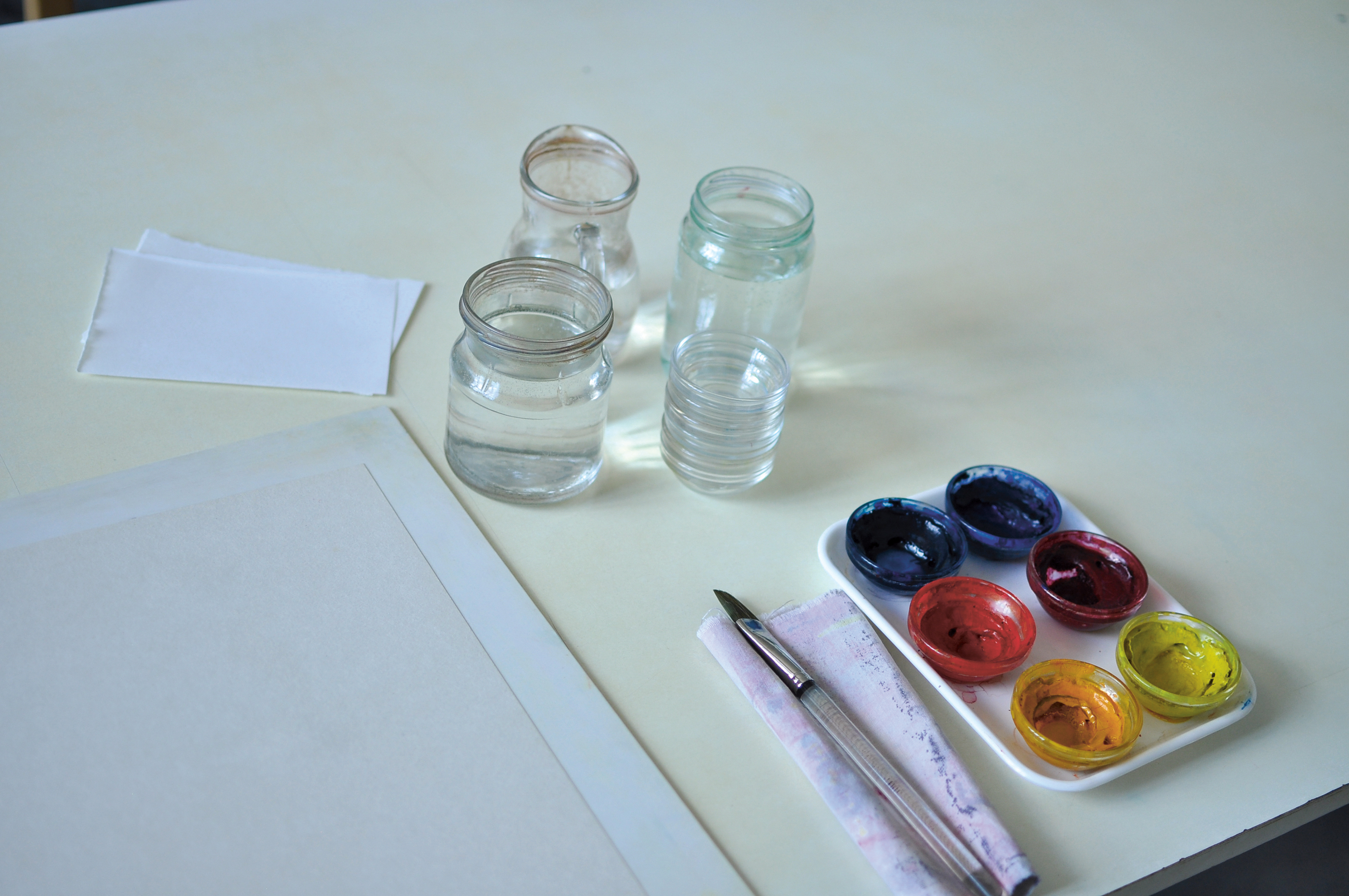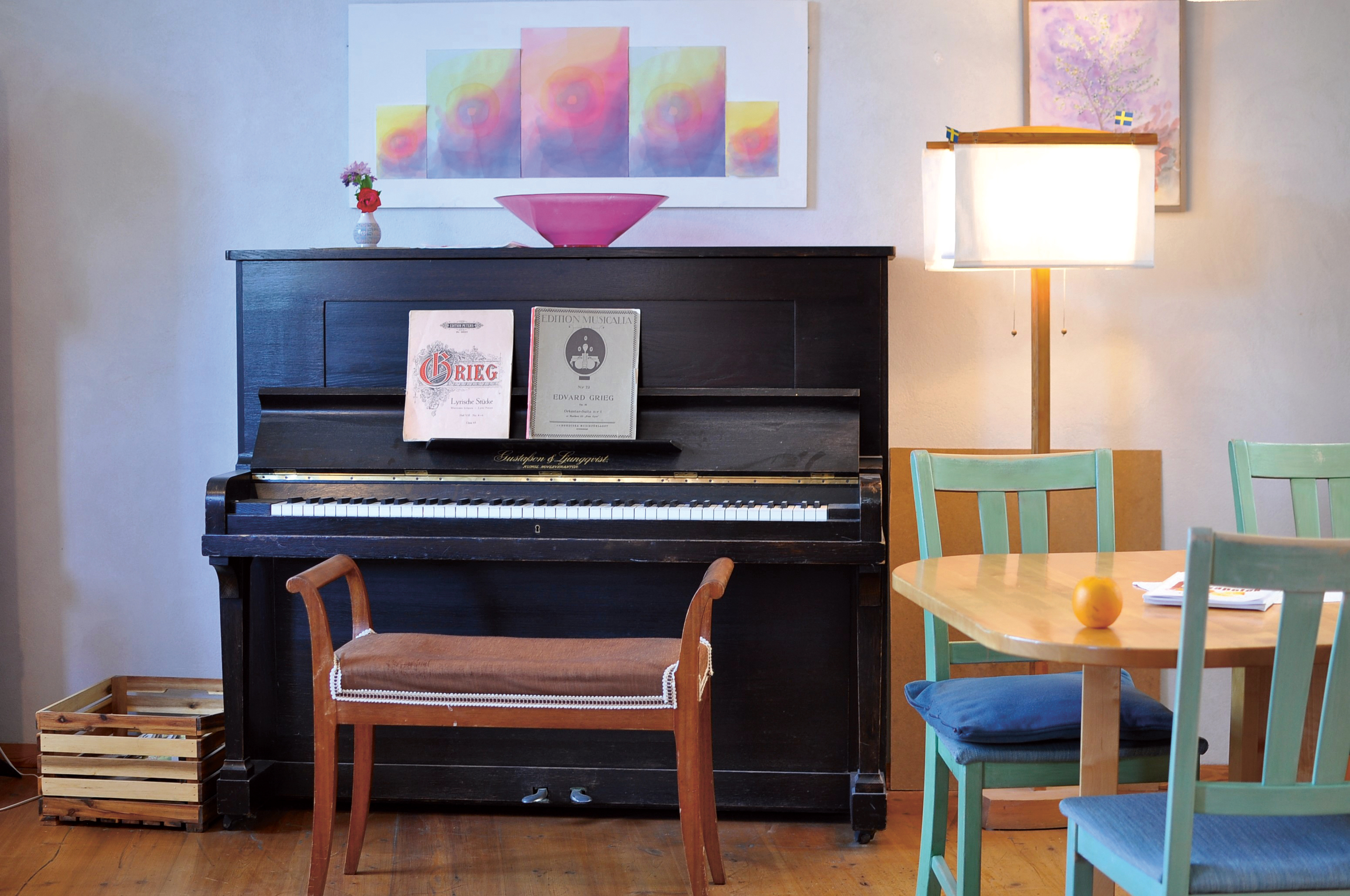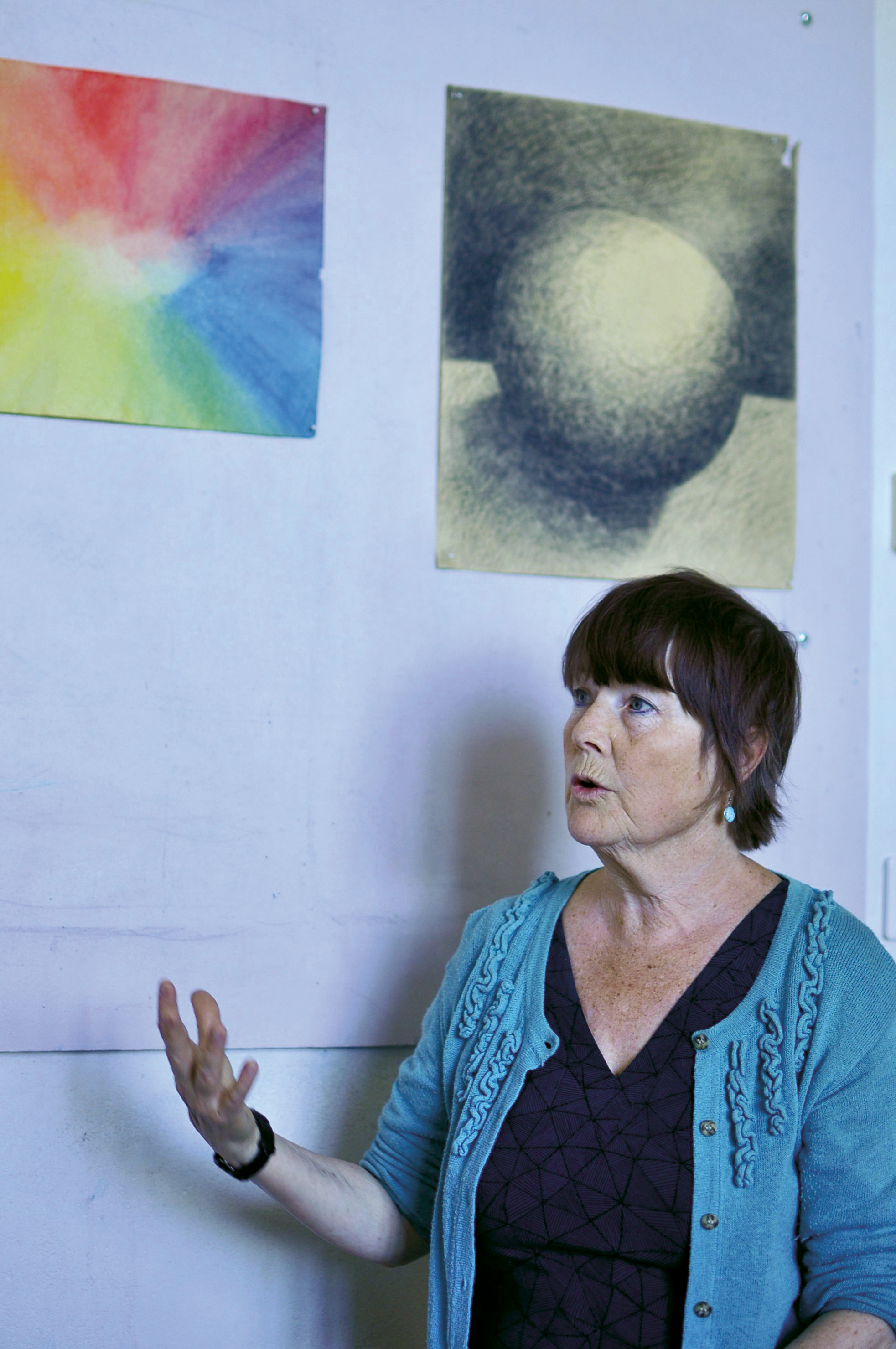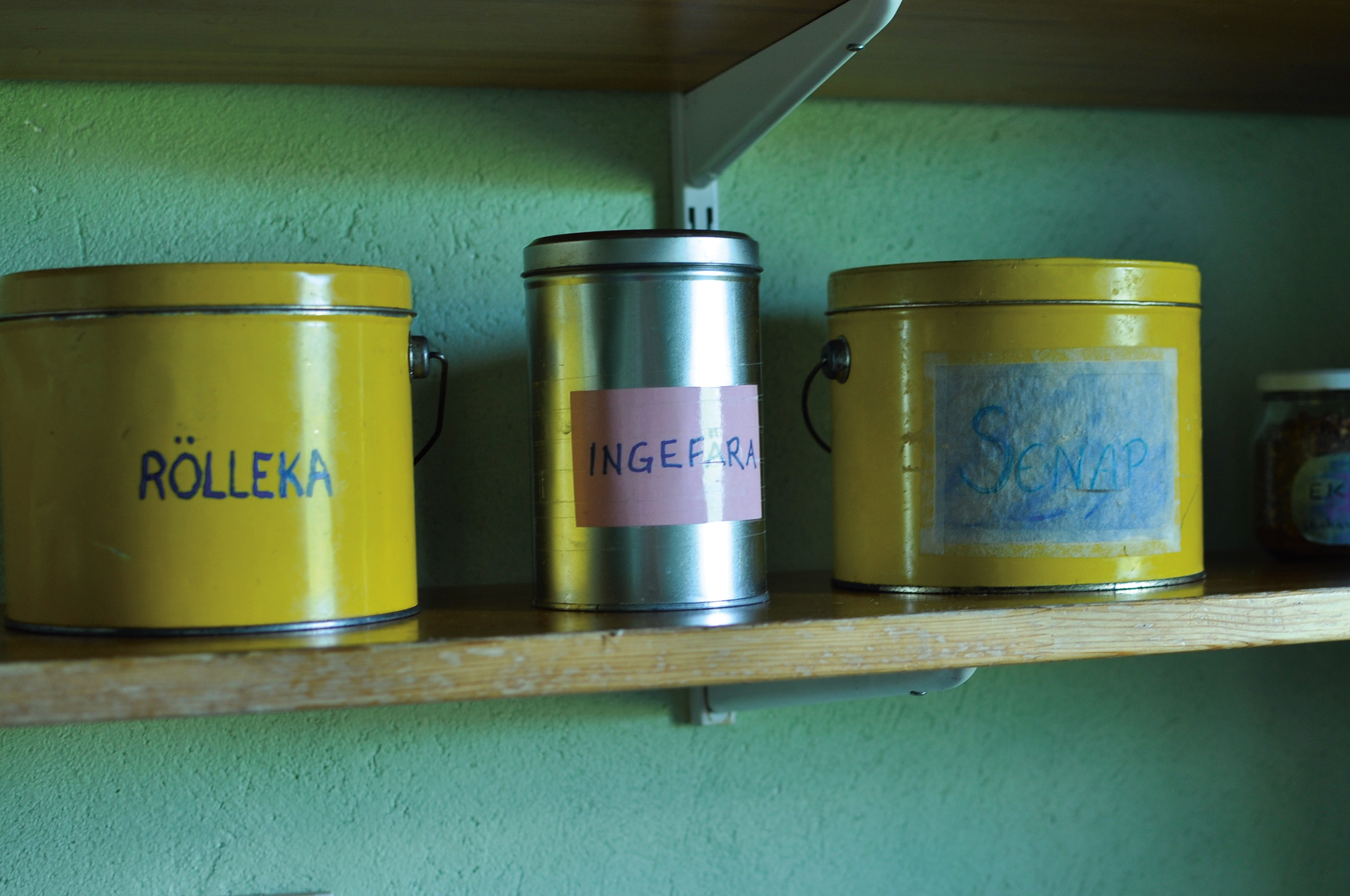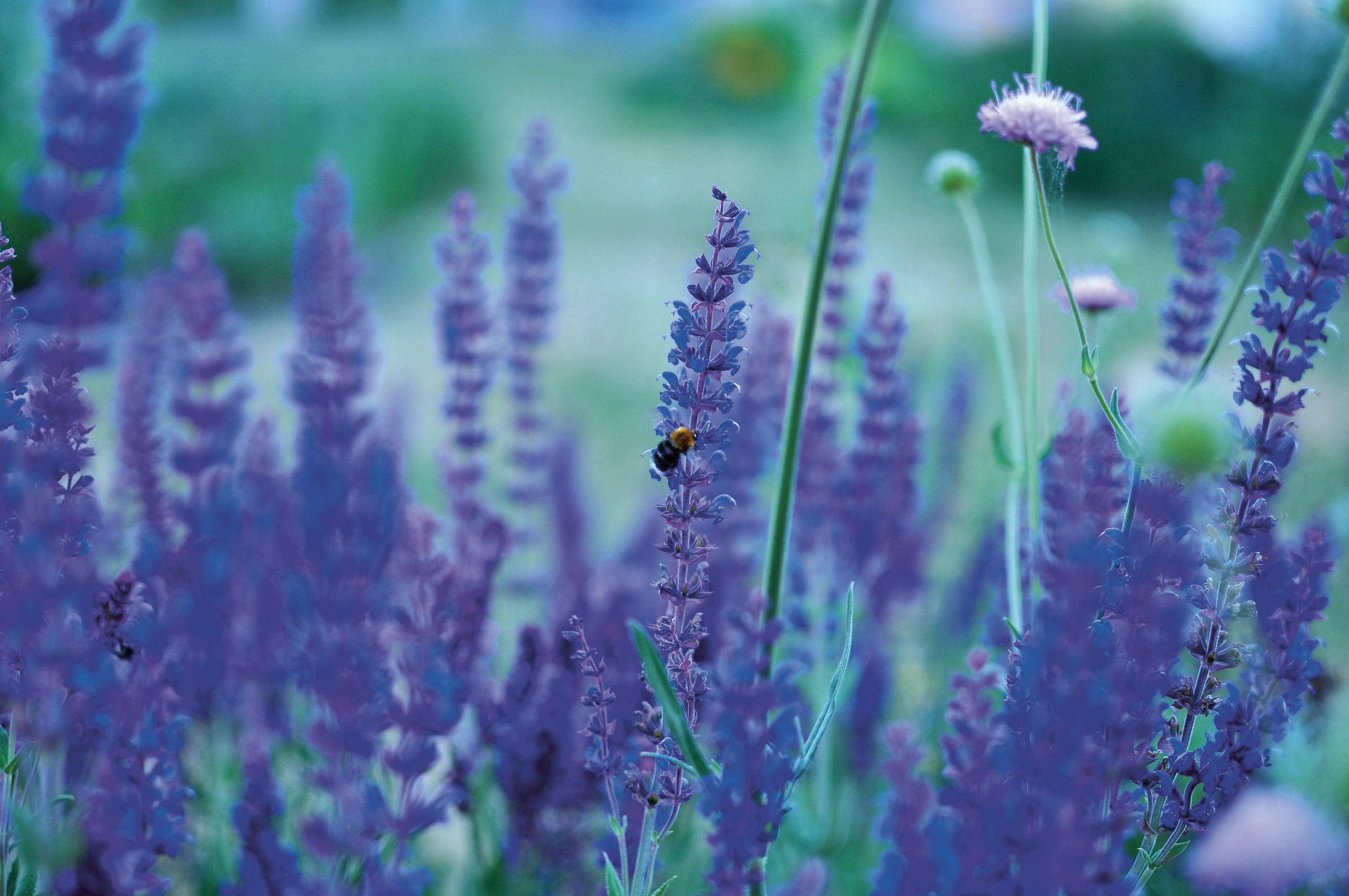Column
The Vidar Clinic
— A Place to Nurture and Heal
In these hospitals of the future, the food is deeply nourishing, the architecture aesthetically inspiring, nature a central component for integration and the staff authentically present and caring. This is a place where the doctor sees your whole being and is interested in your complete story. This is a place where the doctors possess true competence and experience in both the fields of conventional medicine and natural healing science, supported by evolving insights of the body’s own ability to heal itself. Would you believe me if I told you that this place already exists? That the future is here! Just a short train ride from both Oslo and Stockholm lies an oasis of health–
one of a kind in Scandinavia. Welcome to the Vidar Clinic.
It’s a mild June evening when we enter the quiet compound of the Vidar Clinic. A fragrance of wild roses and lavender tickles our nostrils as we approach the entrance of the pastel pink buildings where Anne Ingeborg Haugholt awaits us. Anne Ingeborg is one of the main nurses at the clinic, and she has worked here for several decades.
She gives each of us a spacious room of our own where the walls are painted in soft, uplifting colours and the big windows let in generous amounts of light. Our immediate reaction is, “Oh, can we stay here for a while?”
“Welcome to a place of healing and rejuvenation”, Anne Ingeborg says. “Please get some good rest now”.
Why is this place called the Vidar Clinic? We want to know. Vidar, we are told, is one of the Norse Gods—the younger son of the great Odin and quite unlike the other Gods. How so? “Because Vidar practised deep listening”, the nurse tells us. He is referred to as the “silent God”, known for being very quiet and at peace with nature. “Sometimes Vidar sits for hours in his garden working on a special shoe”, Anne Ingerborg elaborates smilingly. “This special shoe is the strongest of all the shoes and is being made from all bits and pieces of leather that the shoemakers throw in the trash when making new shoes. Vidar will use this special shoe to avenge his father Odin’s death at Ragnarok. The silent God is one of the few who will survive the doomsday and rebuild the new world”. What does all this mean, and how does it connect to the clinic’s perspective on health?
“Perhaps it has to do with freedom”, Anne Ingeborg says before leaving us for the night. She looks a bit secretive; her clear eyes blinking. “Health is freedom”, she says. “Human beings are shaped and affected by the cultural, social and religious norms, but, yet, what is right for you might be something completely apart from these norms. Optimal health can look entirely different for each individual being. The experience of freedom in the human being live its own life and you have to listen to that in order to find health.”
Anne Ingeborg’s words bring us right to the heart of our visit to the Clinic. We came here with one primary inquiry: What is health, really? Then, what is disease? How do these stand in relation to and regulate each other?
Anthroposophic Medicine: An Integrative Medical System Originating in Europe
The following morning, after an energizing breakfast consisting of merely biodynamic ingredients, we are invited into the office of Gunvor Lunde. Gunvor is one of the main doctors at the hospital, and she tells us that health here is seen as a much more complex thing than just the absence of illness. This is a core component of the Anthroposophic Medical tradition. Anthroposophic medicine is the oldest form of integrative medicine in Europe. “The Vidar Clinic is a satellite in the North”, Gunvor smiles. There are about 30,000 issuers of Anthroposophic medicine in Europe. There are approximately 4,800 anthroposophic doctors and some 2,200 anthroposophist places for healing, in addition to an Anthroposophical University Clinic. In Switzerland, Germany and Italy the Anthroposophical impulse of healing is big, and in Latin America and Asia it is growing.
But what is integrative medicine? As the word implies, it has to do with a combining of methods, Gunvor relates, although the anthroposophic medicine is not just a traditional knowledge being merged with modern medicine. The foundation itself is built off the natural sciences and empirical evidence. The methods of studying health and illness from several perspectives is based on a collaboration between the doctor Ita Wegman (1876-1943) and the founder of Anthroposophy Rudolf Steiner (1861-1925). It has since been developed by thousands of doctors, scientists and therapists. Steiner and Wegman experienced the tendency of their time as largely materialistic and reductionist and wanted to expand the development within the general medicine to include a spiritual dimension of the whole human being. In short, they aimed to bring the medical field forward by exploring the deeper connections between body and soul. It goes without saying that the physical body is a crucial component of health, but it does not comprise all that we are. “Wegman and Steiner saw it as crucial to contribute with a method that with today’s language could be called as ‘the art of reading the body as lived’ – where the whole body is seen as spirited”, says Gunvor. From this basis, Anthroposophic medicine was born.
All the staff working at the Vidar Clinic have expertise and experience in both conventional and Anthroposophic medicine. In comparison to most other places, the competence at the Vidar Clinic is thus both extraordinarily high and diverse.
Health and disease
The German philosopher, Hans Georg Gadamer, describes health as a “comprehensive state” of “harmony with one’s own Self”.
Based on this view sickness is also a wide–ranging concept, and cannot be reduced to mere biological components. Health is an expression of well-being that includes joy of life, initiative, engagement and the ability to forget oneself. Unhealth is a state of disharmony with the Self. As a consequence, healing is seen as a process that involves the Self, with the individual’s expression of health as a primary goal. As complex illnesses often lead to personal crisis, personal healing can in turn lead to new inspiration. The Anthroposophical perspectives run concurrently with Gadamer, but Anthroposophical medicine also sees irreducible linkages between how to define what is health and what is the absence of health.
“This is a great, fundamental question with a complex answer”, says Gunvor, her clear eyes shining. “If we look at older systems, for instance Asian ones like Ayurveda or Traditional Chinese medicine, they operate with a concept of balance, and so does the Anthroposophical system. Health is a balance that constantly needs to be sustained. It will go up or down and all the time the need for regulation between possible impulses of sickness or health. Then we don´t see sickness as just an evil, something you have to wage war against, but we see it as an imbalance that lets us ask: what can I do to re-create balance?
Conventional medicine is masterful at waging war against illness, with its tools like surgery and antibiotics. But what it does not often do is to take into consideration: What gives and supports life in a situation of imbalance?
Anthroposophical Medicine supports the human system for self-healing. It recognizes this ability as innate in us. In this vein, it is not the surgeon that makes the wound heal, it is your own body. Anthroposophical Medicine is less interested in the battle, but rather looks to nourish the individual to get back into balance, to get healed. This process differs for every human being. Healing and wellness are such a complex matter, because it is possible to feel well and, at the same time, be about to die. And vice versa: you can have a physical body that exhibits no indication of illness, but still feels terrible. The question is then: Which part of the human being is sick?”
Four Areas of our Being
Gunvor tells us that, from an Anthroposophical perspective, one sees the human being as consisting of different layers.
“We have a Physical body”, she says, “which is the matter, the blood, the flesh, the bone. Then we have the Life body, the area where all life forces are located. This is what we call Chi in Chinese medicine and Prana in Indian medicine. The Life body is what makes the blood cells constantly renew itself, what makes the mucus membranes in the intestine constantly shift, that which makes our wounds grow. The life force is strongest when we are small and everything is growing. As we get older, we dry more up, we contract, and, in the process, our life force gradually reduces. You can see that the life force of a baby and an elderly person is very different. The possibility for regeneration is not the same. This area of Life Body we have in common with plants.
The next area is the area of feelings; the area of the Soul. We can see that animals also have this. they feel pain and, to a certain extent, express these feelings.
Lastly, and potentially exclusive to the human being, is the spiritual sense of the “I“-feeling.
Many of us can rest in the understanding that we are not perfect, and that we are not meant to be so. We can see ourselves in development, in constant evolution. Most often this happens in relation with others; with other humans, other beings and with nature.”
The three-fold body
When Gunvor first starts to examine a patient, she uses the tripartite physical body processes as a point of departure. She explains the system like this, “First comes the head, which is hard and round and where the nervous system derives from. It goes around in the whole body, but the main seat is the head. Then you have the other polarity; the legs that are soft on the outside and hard on the inside. They are long and they stretch out. We can also include the stomach and the arms in this system. This is the area of the will and the metabolism.
In the middle you have the rhythmic system – that is the heart and the lungs located in the chest behind the ribs. A little inside and a little outside, a bit bent. It is something in between the round head and the stretched–out limbs. This third and middle system balances the head and the limbs and is a communicator between the nerve and sensory area and the metabolism. I use the tripartite system to see what imbalance is prominent in which system”, Gunvor explains. “Where is the patient weak, where is the patient too much? Up here or down there? In order to see that, I look at the body—where you have less and where you have excess—which illnesses you have got, and to which system do they belong. I also notice your radiance. How do you talk, how you formulate your thoughts, feelings and desires? I then see what needs to be strengthened or what needs balance. I prescribe treatments, therapies and preparations accordingly. This is in addition to the conventional medicine that the patient brings herself”.
Your inner I is always healthy
On Vidar’s webpage, you can read: “A healing process has to encompass the wholeness of body, soul, social aspects and existential questions of meaning. Elements like presence, touch, conversation and participation of the patient are essential factors”.
Gunvor relates how this is done primarily through four methodological steps. The first is a quantitative diagnostic, by taking blood tests or x-rays, and is the same as what conventional medicine does when observing a symptom. This stage provides somewhat measurable data to tell the story of overall health. The next step involves a qualitative approach. It involves asking how is the symptom expressed, and what is the connection between the different symptoms? It is about coming to an understanding of the imbalance in its totality. Thirdly, the connection between body and soul in health and illness is studied in detail. As a fourth step, one tries to move towards meaning. What meaning does the illness have for the patient? What resources exist in order to create meaning and healing? “The Self can come into disharmony with both the body and soul; however, as a living being, it cannot get sick. The Self can just become obstructed in its expression. This is an important ethical principle within this system, especially in a world where a lot of us are functionally disabled or just old. You are not your illness”, says Gunvor, “The body, that which we dress ourselves in, can get sick, but your inner ‘I’ always remains healthy. And that is the place we want to access”.
Stress and the modernity of the Anthroposophic impulse
The Vidar Clinic offers rehabilitation for patients with chronic pain, for instance with fibromyalgia or cancer diagnoses, other internal medical conditions, and a variety of stress related illnesses. Gunvor tells us that there are an increasing number of people whose illness is related to stress. “A big part of my job is often to give lifestyle advice. We often have to start with simply stressing down. Independent of what you are suffering from, the fact that people are so stressed to the bone is a common denominator. This begins with resting and bringing feeling back into your body. Then you will start to taste the food, to feel the nature, smell the cows in the field… A lot of this work is about getting into contact with yourself. And everyone has to get into this contact by themselves; I can assist in getting in touch, but I cannot really say or do more than what is already there. A self–realization cannot be done by any other than yourself”. Gunvor asserts that the process of rehabilitation at the Clinic involves taking active responsibility for oneself. The idea here is that we all have a source of inner wisdom, and the key to the answer actually lies within yourself.
Gunvor adds that some patients that come are not there at all. Some are so weak that all they need is to rest deeply, be taken care of and get nourished. Nothing else can be expected of them. “But this is the first phase. Then at the next step, when they get stronger, we begin to look at what they can do for themselves. Here we provide knowledge, ideas and therapies that might be new to the patient, but you need to have the openness and willingness in order to absorb and take in what you need to heal.”
From an Ayurvedic point of view, we could say that, in a way, it is Nature speaking to Nature. Does it make sense to say that we add from the Nature around us what we, seen as Nature, need?
Gunvor nods and confirms that the two systems are similar in many respects. “Of course, we use different herbs, because we belong to different localities and contexts, but the idea of Nature communicating with Nature is the same. We also have the practises of yoga and the Eurythmy, respectively. They are different practices but with the same goal of achieving balance between the physical, mental and spiritual parts of us in order to get into deeper contact with our true selves. There are several similarities with the ancient systems of Ayurveda and Chinese medicine, but Gunvor says that a fundamental difference is that where the Ayurvedic medicines are built on several thousand years old recipes from the Vedic literature, Anthroposophical medicine is built on a notion that the medical system is continuously in development. It is not a finished concept but will always adapt to the impulses of the time. In this way it is a very modern system.
The therapies and the medications
“When the patients first get here, we go thoroughly into their case history and then make an individual treatment plan accordingly. The treatment plan is a combination of methods and is considering the whole constitution of the sick patient, taking into account all dimensions: physical, emotional, mental, spiritual, and social”, says Gunvor.
We are told about how anthroposophical medicine employs, in addition to conventional treatments, special medications and special therapeutic procedures. These includes eurythmy therapy, rhythmical massage, metal light therapy, oil-dispersion baths and anthroposophical art therapy. In addition, there are special anthroposophical nursing techniques. The therapies can be used as individually or combined with other anthroposophical therapies.
Plant, mineral, metal and animal substances are used in anthroposophical medications. The medications are conceived, developed, and produced in accordance with the anthroposophical knowledge of the human being and nature, and the substances are sometimes potentized and rhythmised.
“Because each of us is so unique, a treatment plan can differ a lot from person to person, but there is a certain structure to it, and the rhythm of the day is important”, Gunvor continues.
She tells us that an example of a day with therapies can be that you get a foot bath in the morning followed by breakfast. After this, you go for a walk and then you have your first therapy—for instance, eurythmy therapy. After this, you go for lunch, then you rest, perhaps with a herb pack some place on your body, often belly or back. After this, you go for your second therapy—for instance, art therapy. Then there is the evening meal, after which you normally get a rhythmical einreibung, often on the legs, and then it is probably time for bed. Normally you have two therapies going on as a process throughout the time you are at the clinic, and two external treatments every day. There are also cultural events going on during the week. These can be lectures on art, culture and history, or different concerts and performances.
“In the beginning of the stay here, you can feel like everything gets worse, because your symptoms get so clear when you are allowed to just be and let this being be your main focus. You feel the pain more clearly. You can really sense how tired or sad you are. Then you get into the treatments and a lot starts to happen,” Gunvor relates and continues:
“Because the therapies are so multisensory in their approach, a lot will be going on at the same time. Many say that more happens here in three weeks than in one year in the outside world. To be so seen, felt, touched and given a lot of care, in addition to having concrete experiences of a deep rest, often opens up strong inner processes where many people can reach deep and new realizations”.
Gunvor says that at the centre of the therapies is a vision of the body as vehicle to live life. “Your life experiences are stored in the body and can manifest as illnesses. Research shows that there is a strong connection between traumas and sickness. This view is not exclusive to anthroposophical medicine”, Gunvor says, “but starts to get really accepted within the more conventional field of health and care as well. Anna Luise Kirkengen has, for example, done excellent work in this field. Basically, we see that people who have several diseases, more often than not, carry traumas from childhood or early life. This is why it cannot be emphasised enough how crucial it is to see every illness as a holistic story”.
Eurythmy Therapy
“How do I live in my body, and how can I use it as an instrument to live fully?” queries Markus Keller as he opens up his arms into a generous open gesture. We are taken into the beautiful and spacious Eurythmy room to get a taste of one of the therapies.
Markus originally comes from Switzerland but has worked with eurythmy therapy at the Vidar Clinic for the last 31 years. The word eurythmy comes from Greek and means “beautiful, harmonic rhythm”. Markus tells us that eurythmy therapy is a movement therapy where we translate language and sound into movement. You can allow movement to express emotional states and use movements to consciously influence and transform emotions.
When we aim to transform the innermost power and quality of the language into movements, we can impact metabolism, the breath and circulation in the body. “Eurythmy therapy works by processing tension – both mental and physical – and we work a lot with boundaries”, Markus says. “As modern humans, we are very open and take in a lot. The massive amount of information surrounding us on all fronts can many times lead to the experience of overwhelm, and a lot of the modern diseases like burnout or chronic fatigue have to do with this. Then we have to work with feeling what is inside and what is outside, and how can I create a balance between the two? We need to ask ourselves consciously: How much do I let in? What do I need?”
Markus tells us that, for instance, in the treatment of a chronic fatigue they work a lot with how thoughts, emotions and actions work together and impact each other.
“Eurythmy therapy is about gaining real access to oneself and to learn to integrate more efficiently into the body and into the emotions, as well as to stimulate our own innate healing powers. A goal is to get back to a feeling that “my own “I” is carrying me”.
He tells us that many of the patients that come here have never heard about eurythmy, but that their experiences with it are very positive and transformative.
Art Therapy
“A lot has to do with getting to a place of here and now”. Cecilia Letmark’s eyes are glittering silently, as if she´s carrying the answer to a secret. She has worked as an art therapist for 20 years—10 of them at the clinic. “This therapy is about getting into a process of transforming something that is stuck or something that is in imbalance. It is a road you have to walk yourself, but I am here to give guidance”. Cecilia says that patients usually come to her for about 8-10 sessions. The first few visits have a lot to do with letting go. “I usually ask them to release expectations and inner pressure of performance and to open up to receive. To receive the colours like nourishment to the soul, I usually say. Then some people start to cry. Because we are so used to having to be so good, so proficient and competent. And to think that we have to fix all of this by ourselves… otherwise we will just go to the dogs. It can be so empowering to just let go of all of that and instead say yes to what arises in the painting. To listen with interest and then accept what comes without judgement. In the beginning it is all about relaxing, experiencing and play – to loosen up in order to actually feel here and now”.
Cecilia explains us that this is often when the patient first starts to recognize something. And slowly, without really getting into symbolic interpretation, the patient can experience a meeting with herself. Cecilia reinforces that this is not an art course. It is about expressing what is there. Often archetypes show up—birds, wolves, or something completely different, shapes and colours in all varieties are seen. Nothing is ever wrong. In the beginning, many patients start to paint realistic, but in order to experience that you are free, you do not have to do that. It can be very liberating to paint a green sky or just to play with shapes and curves, to follow the spontaneity and simply let the energy lead you, to let go of the head.
Sometimes they work with clay and moulding, but a lot is done with aquarelle painting on wet paper. They use colours without chemicals, and when a session starts you will get 6 colours, some warm, some cold. A part of the therapy is to blend the colours that you want to paint with yourself.
“In one way, the colours are the world. So, it is about getting into relation with the world.
It is actually pure magic what we are doing here. You see the colours lying there, passive, and then you bring them to life by creating a painting out of them! It is a deep spiritual process, and I come to see every painting as sacred”.
Cecilia tells us that, after starting with art therapy, a lot of the patients experience the colours in the world as stronger and clearer as well.
Often when people get to see themselves in the paintings, they get strong realizations about themselves.
“As you create, you experience yourself as a creator in your own life. These notions can produce strong and intense feelings, as well as feelings of fragility and vulnerability”, says Cecilia.
She explains that sometimes patients derive cognitive meaning from their situation by evaluating their creations, but that is not necessarily the point. Many patients tap into resources within themselves that they did not know they had. Cecilia tells us a story about a painting, by a patient, that showed a lot of movement and chaos. Cecilia made the careful suggestion to the patient to ground the dramatic movement in the picture. The patient looked at her and said, “But that is something I don’t have!” Cecilia encouraged her very gently to see if she still could make it, and after the patient had tried, she told Cecilia: “But I do have it! I just had to search really deep.” This simple gesture caused the patient to recognize the groundedness that she had in herself.
“I strongly believe in the human’s ability to heal ourselves. I believe that art can be crucial in this process”, says Cecilia.
Awakening the whole being
Eva Sol Vestre is one of the patients at the clinic. She credits art therapy as something that has changed her. She describes how they have worked with different themes each session, and that the work has allowed her to go deep within her own biography, allowing her to gently explore things that she has put a lid on throughout her life. “It has been very awakening”, says Eva Sol.
We meet Eva Sol in one of the small living rooms that are to be found in each patient corridor. She has just returned from an excursion to a special well located in the area around the hospital, and she seems very high in spirits. She offers us each a glass of water from the spring, and we toast and salute to good health.
“I came here to heal”, she says. “Tomorrow I leave after being here for 2 weeks, and I have got the inspiration to see how much power we all have to heal ourselves.”
How and why, we want to know. Eva Sol gifts a glittering smile.
“Just to be here is healing”, she exclaims. “The positive energies here. As well as all the nature and beauty. The birds. The trees, there is so much life here. It wakes up all the senses. You can smell and feel and taste! Yes, it is awakening”, she affirms.
Eva Sol does seem alive, awake, like a human being that really is present with all her human qualities. ‘’And the nurses…!” Eva Sol exclaims. ‘’Just wandering angels, they are.’’
And she describes the rhythmical einreibung as pure magic. She also highlights the Eurythmy therapy, and how she through this has been able to connect more to the power of “I”.
“The world of today is so fragmented”, she says. “To be able to come here and breath and just feel into the question of “who am I” is of the highest value. To get to know yourself and love yourself just as you are is really hard work, but this is the kind of revaluation you get from being here, with a lot of support from the therapies. And we get tools to take back home in order to continue the process we are in. I would say this is one of the biggest differences from conventional health-care systems, where you often ‘’just get a tablet and are told to go home and take it easy’’.
What would you say to someone curious about coming to the Vidar Clinic?
“It is a place with the best care and healing services, and at the same time it appeals to your own capacity of getting in contact with the healing abilities of your own system. I find that genius. I would also highlight the incredible expertise of the staff working there. This is a very unique and magical place and I earnestly recommend it to anyone who truly needs and want healing.”
The care and touch
As Eva Sol highlights, the staff working at the clinic is really quite remarkable. Of the 15 nurses that work here we are lucky to sit down and have conversation with a few of them and are told about how the unique nursing techniques are key factors in the Anthroposophical healing processes are an essential part of a patient´s day at the clinic.
Among the techniques are herbal compresses, foot bathes in addition to rhythmical einreibung after Wegman-Hauschka. Each employ different oils and herbs, adapted and specialized to the individual situation. The nurses tell us that the most common herbs used for foot bath and compressions are mustard, lemon, ginger, yarrow, sorrel, and horsetail, and when giving rhythmical einreibung they use different oils for different purposes. Rosemary, lavender, arnica or moor mix are among the most often used herbs.
There is a lot of work with the rhythms at the clinic, not only when physically giving the einreibungen, but also the principle of getting the patient into the rhythm of the day, to feel and adjust the body to the natural cycles is of great importance. That is why it is not coincidental when and how you get the treatments. Some are done before breakfast, some after, others after lunch or in the evening. The rest after the meals, especially the lunch rest, is crucial, and the concept of active rest is essential in the healing process.
An essential ingredient in all care and nursing situations is the importance of touch. This emphasize creates an intimacy, both in the way the patient gets close to herself and in the bond created between the therapist and the patient. Through touch a vulnerability arises, and when we get to this place the real healing can start to happen.
The nurses tell that the most amazing thing about working at the clinic is to be able to follow the processes so closely, to see the patient in the healing and watch them discover the answers in themselves. They also say that to work with pleased patients is a real blessing. Most patients that are at the clinic are so grateful and express that have real experiences of healing from the core. Yet another thing is the generosity of the time given. It is healing in itself to be able to devote proper time to each and every patient. “As the world is going so fast today, we need the alternative,” says one of the nurses. She believes that there is a special need for Anthroposophical medicine in today’s society. “A lot is changing in the time we are living in, and we can see that much of the conventional medicine is in many fields going towards an end; take the example of antibiotics, where more and more bacterias are getting resistant. I believe the Anthroposophical medicine talks to the future and the Medical Section of Goetheanum in Switzerland has recognized that there are 5 areas where Anthroposophical medicine plays and will continue to play an especially important role; that is trauma, palliative care, everything concerning birth, cancer, and resistance against infection.”
Out of beauty comes health
Most of the staff working at the clinic does not only have a broad competence but a long experience as well, as almost all of them have been working here for several decades. And not only the staff knows what they are doing, the place itself has now existed in over 30 years and is resting on a great deal of experience as an institution that has been through many phases. It is not so hard to understand why the Vidar Clinic is a place you want to stay though. It is something about the atmosphere here, you are immediately drawn into a certain kind of ease when spending time at the clinic. There is such a serene and peaceful ambience in the corridors and there are no traces of mobiles as the patients as well as the staff and the visitors are suggested to do a digital detox while at the clinic, and encouraged to only use cell phone outside of the premises.
The Vidar Clinic is based on a view that the aesthetics has an effect on your healing; that what you see and feel around you will have a direct impact on the feeling of harmonious wellbeing. Thus, the architecture becomes of great importance, and not much of the surroundings at the clinic are left to coincident. Everything from the colours at the wall, the angles and shapes of the rooms, the windows and the interiors; not to mention the buildings themselves.
A main point is also that being in Nature is contributing to the healing of the patients, and when the clinic was built it was conscious choice to build it in natural settings, surrounded by trees and flowers and with easy access to larger areas of nature.
In order to show how this theory of how aesthetics is connected to healing, Gunvor gives us a reference to a classical study done in USA. Here the patients of a simple operation where divided into two groups. One group of patients where lying in a room where they had the view into a wall, and the other one was looking at a tree. There were clear differences in the restitution period, both in the pains and in the complications; the group facing the tree were healing both better and faster than the other one.
Food and lifestyle
What we take into our bodies as nutrition is essential in the healing process, and at the Vidar Clinic the food is given a lot of importance. Anne Ingeborg tells us that it is crucial that the raw food materials has the highest value of nutrients possible, because this is the very foundation in order to be able to absorb the therapies.
The food served at the Vidar Clinic is biodynamic from bottom to top as far as possible, and three times a day the patients can enjoy colourful vegetarian meals in the light and serene dining hall. “And he food must taste!” says Ann Ingeborg. In order for the metabolism to work that is most important of all. “Because, she adds, with a smile, “metabolism is the very foundation of health. To be able to digest – not only the food but all of life’s aspects – this is the secret of a sustainable health.”
Gunvor is telling us about Dean Ornish, an american researcher and cardiologist has showed how quite simple lifestyle alterations can make huge differences in your way to get well and healthy2. He did a small pilot study where 30 men were to go for a walk in nature, eat Mediterranean food (less meat and fish, mostly vegetables, oils, grains and nuts) attend a social group and meditate ½ hours each day. After three months he saw an increase in the activity of the telomerase enzyme. This enzyme has to do with the telomeres that are located in the outer of parts of our DNA, and they get shortened when you get sick or older.
Telomerase activity is a sign that these are rebuilding; that means that you are regenerating, creating new life. When Ornish did the same study but for a prolonged period of five years, the results showed that the telomeres were not only more active but had also gotten longer. Gunvor says that the findings of this research are evident to her in the work she does at the clinic. “I see with my own eyes every day patients getting well using these lifestyle changes, but I like how this study shows it in the biochemical way.”
The Future
We are back where we started. In conversation with Anne Ingeborg, the main nurse of the Clinic. “If you want to understand life, study the cycles”, the experienced nurse says to us. “All life on Earth is having to do with rhythms”.
She believes that the future of medicines lies in the medicines that take use of the rhythms when created. This is exactly how the Anthroposophical medicines are coming into being. They are made in a complex process, that includes a way of rhythmizing the herb, plant and mineral substances, 1:4 throughout the day and night, for a week. “In this manner of creation, Anne Ingeborg explains, “you are addressing both that which alleviates and the healing abilities of the human being herself. And this is exactly where the future of health lies.”
“In the future, and in a way, we have already entered there, so many will be sick that we will not have the resources to heal all with medicines and health personnel. This is a tendency you see all over the world. And this is why it is essential that you get in touch with your inner compass.” In Greece philosophy a core concept is how we need to develop Truth, Goodness and Beauty. ”This is also the fundamental building blocks in a sustainable health development of the human being,” Anne Ingeborg continues. “Truth you experience trough your own body. Beauty is when you feel at home in yourself. And the good you experience by doing beautiful actions.”
“When coming here, to this earth, the human being always brings with itself a huge resource”, Anne Ingeborg concludes, “just by being the unique combination of cells that it is. To nourish, assist and work with our health and vitality is to make this unique gift shine and come forth in the world. And in this way, we can experience health on even bigger, and more cosmic levels.”
If you’d like to learn more about Anthroposophical Medicine and Care, here are some recommendations for further reading:
- Kienle G S et al; Anthroposophic Medicine: An integrative medical system originating in Europe. Glob Adv Health Med 2013.
- Dean Ornish; Increased telomerase activity and comprehensive lifestyle changes – a pilot study. Lancet Oncol 2008.
- Dean Ornish; Effect of comprehensive lifestyle changes on telomerase activity and telomere length in men with biopsy-proven low-risk prostate cancer: 5 -year follow-up of a deskriptive pilot study. Lancet Oncol 2013.
- Arman M et al; Anthroposophic health care in Sweden-A patient evaluation, complementary therapies in clinical practice. 2010.
- Sundberg T et al; Usage and costs of first-line drugs for patients referred to inpatient anthroposophic integrative care or inpatient conventional care for stress-related mental disorders – a register–based study. BMC Complementary and Alternative Medicine 2015.
- Sundberg T et al; Opposite drug prescription and cost trajectories following integrative and conventional care of pain-a case -control study. PLoS One 2014.
ANNE INGEBORG HAUGHOLT ON THE ART OF SELF CARE
Our main task as nurses is to wake up the patient’s innate ability to heal itself. We want to find tools that fit the patient as an individual, and it is essential to be self-motivated to start the healing process. I always ask the patient: “What is it that you are carrying in your heart? What is most important to you as a human being?” It’s in this way we are able to touch the deepest part of the self and turn the key for healing.
The human ability to taste, smell, hear, see and feel mark essential components of the human experience. Through these portals, we receive information about the world around us, and our place within it. In order for these portals to be clear and receptive, we have to aid in their digestion. These sensory receptors provide a gateway for healing, establishing a basis for metabolic energy and keeping the individual healthy. Another important aspect of health is our relation to the different environmental realms – mineral, plant, and animal world.
We have to remain aware of this to keep this connection alive.
SOME OF ANNE INGEBORG’S BASIC SELF CARE TIPS
Keep warm. Keep the body, especially the feet, warm. Sometimes you have to touch yourself to feel if you are warm or cold. Use rosemary and lavender as foot bath and wear woolen socks. Another element of warmth is to emit warm in your social interactions. Be sure to nourish enthusiasm in your everyday life.
Mind your rhythms. Pay attention to your natural cycles and rhythms: of sleep, rest and activity. Find a rhythm that suits you. We are different, so you have to be conscious of working within a rhythm that suits your individual well-being.
Eat nourishing food. Food that tastes good and has been made with care awaken metabolism, which helps break down and take up the nutrients. Nurtured metabolism is the key to good health.
ANNE INGEBORG’S HOME-PHARMACY TIPS
Stock up on these essential goods:
Lemon and onion (for inflammation, high fever, allergic reactions, anxiety),
Thyme (warming, for flu, cold, digestion)
Rosemary (warming, increases blood circulation),
Caraway and chamomile (for digestion, calming, cramps),
Mustard seeds (warming; against panic and anxiety),
and yarrow (for menstrual pains and problems and protection against ticks)
3 ESSENTIALS FROM THE ANTHROPOSOPHICAL PHARMACY (WELEDA PRODUCTS)
Calendula (for wounds that will not grow or are infected)
Arnica (for muscle pain)
Combudoron (for burns)
This is an article from Hauste Magazine.
Words by Mira Beckstrøm Laurantzon.
Photographs by Berit Indset.
